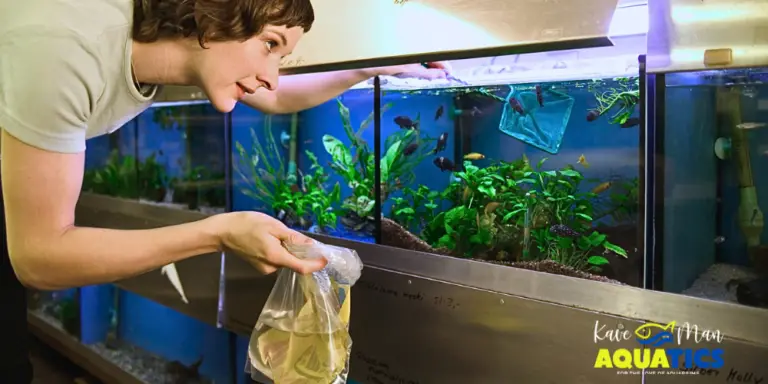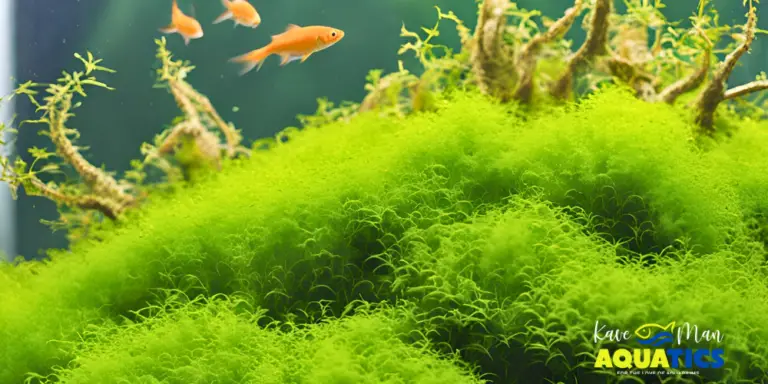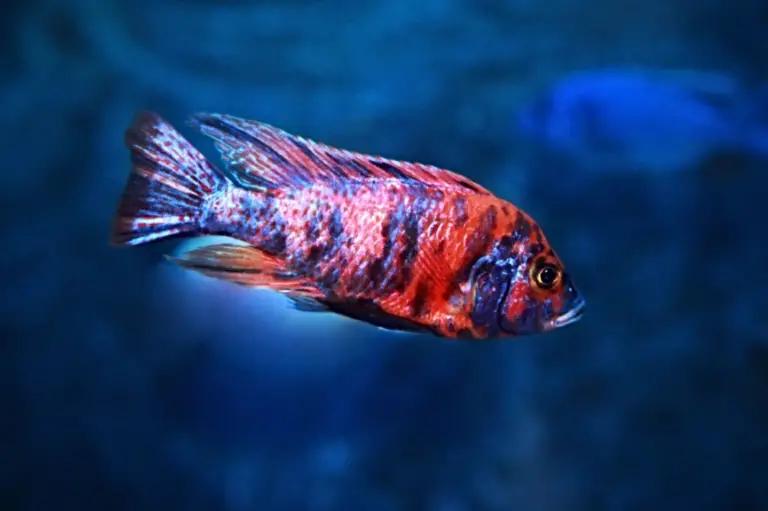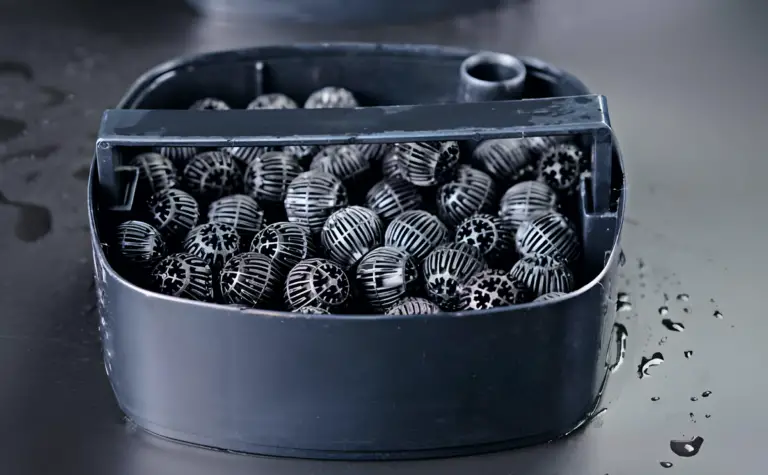5 Methods to Remove Black Beard Algae from Your Aquarium — For Good
Imagine gazing into your aquarium, envisioning a lush aquatic paradise, only to be confronted by the persistent, tenacious presence of Black Beard Algae — or Audouinella. This unwelcome invader can turn your aquatic haven into a battleground, but fear not, for we’ve got the strategies you need to take back control. In this guide, we’re unveiling five battle-tested methods that will empower you to remove Black Beard Algae once and for all.
Whether you’re a seasoned aquarist or just starting your underwater journey, dealing with Black Beard Algae can be frustrating. We understand the struggle, and that’s why we’ve compiled a toolkit of effective techniques for algae elimination. From harnessing the power of hydrogen peroxide to enlisting the help of nature’s own cleaners, we’ve got you covered.
So, if you’re ready to learn how to remove Black Beard Algae using techniques that truly work, let’s embark on this journey together. Your aquarium’s transformation begins now.
Method 1: Remove Black Beard Algae Using Hydrogen Peroxide
Hydrogen peroxide is a familiar household item with a surprisingly effective role in the battle against Black Beard Algae. This method involves harnessing the power of this mild antiseptic to eliminate the pesky algae without causing harm to your aquatic inhabitants.
What is Hydrogen Peroxide and How Does it Work?
Hydrogen peroxide (H2O2) is a simple compound made up of water and an extra oxygen molecule. It’s a potent oxidizer, which means it can break down organic matter — like Black Beard Algae — when applied directly. However, it’s essential to approach this method with care and precision.
Using Hydrogen Peroxide to Treat Black Beard Algae
- Prepare a solution: Dilute 3% hydrogen peroxide with aquarium water to create a solution that won’t harm your plants or fish.
- Target application: Using a syringe or dropper, apply the solution directly to the affected areas of the algae. Avoid direct contact with plants or sensitive species.
- Monitor and rinse: Allow the solution to sit for a few minutes while keeping a watchful eye. Afterward, rinse the treated areas thoroughly by performing a water change.
- Repeat if necessary: Depending on the severity of the infestation, you may need to repeat this process several times with a few days’ gaps between treatments.
Or, you can follow along with our video:
Precautions and Risks
While hydrogen peroxide can be effective, it’s important to exercise caution. Avoid overdosing, as excessive exposure can harm your aquatic life. Perform a small test spot before treating the entire tank to ensure your plants and fish tolerate the treatment. Also, consider removing any activated carbon from your filter during treatment, as it can absorb hydrogen peroxide.
Utilizing hydrogen peroxide to remove Black Beard Algae is a precise science. If done correctly, it can help you regain control over your tank’s aesthetics. But remember, moderation and vigilance are key.
Method 2: Manually Remove Black Beard Algae
Sometimes, old-school techniques are the most effective. When it comes to tackling Black Beard Algae, manual removal is a hands-on approach that can yield promising results.
The Manual Removal Process
- Choose the right tools: Gather soft brushes, toothbrushes, or even tweezers. The goal is to gently dislodge the algae without harming your aquatic plants or the aquarium’s inhabitants.
- Target the affected areas: Identify the spots where Black Beard Algae has taken root. This algae often attaches itself to surfaces such as rocks, decorations, and even plant leaves.
- Scrub gently: Gently scrub the affected areas to loosen the algae with your chosen tool. It’s essential to avoid vigorous scrubbing, which can damage your plants or the tank’s substrate.
- Vacuum or siphon: As you remove the algae, use a gravel vacuum or siphon to immediately remove any dislodged particles from the water column.
Cautions and Considerations
While manual removal can be effective, it requires patience and precision. Be cautious not to disturb your aquarium’s balance while scrubbing. Additionally, consider the tank’s inhabitants — avoid sudden movements that could stress or harm your fish.
Manual removal is a time-tested method that offers immediate satisfaction as you witness the algae being lifted away. Regular maintenance, along with this technique, can keep Black Beard Algae at bay and contribute to a healthier, more vibrant aquatic environment.
Method 3: Introduce Algae-Eating Fish and Invertebrates
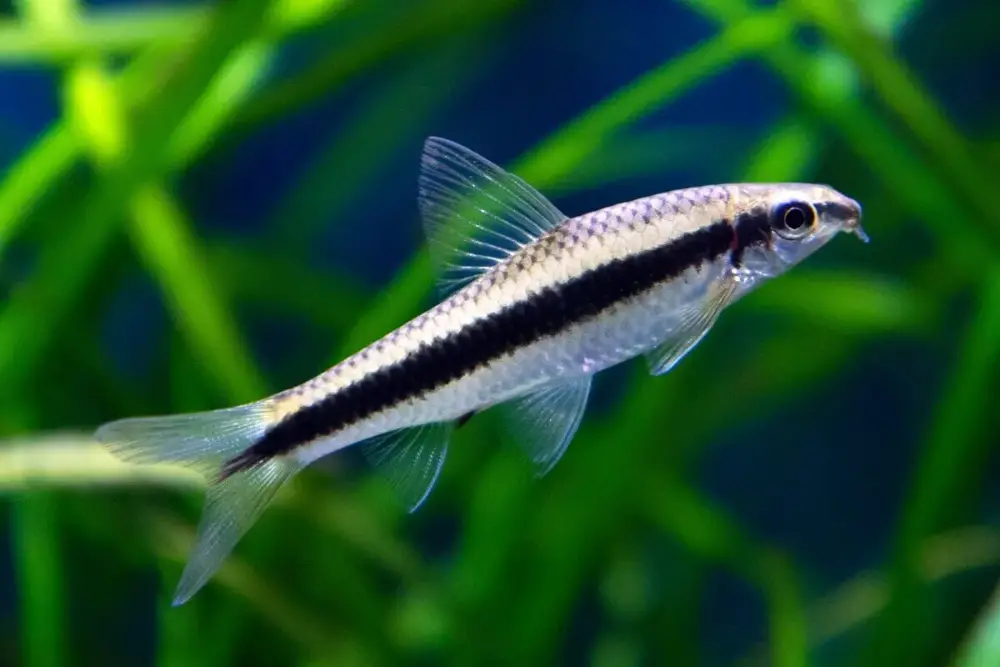
In the battle against Black Beard Algae, sometimes the best allies are the ones that enjoy a good algae feast. Algae-eating fish and invertebrates — like the Siamese Algae Eater — can play a crucial role in keeping your aquarium free from this persistent nuisance.
Benefits of Algae-Eaters
Algae-eating fish and invertebrates, such as Siamese algae eaters, Amano shrimp, and certain types of catfish, are natural allies in your fight against Black Beard Algae. These organisms have a voracious appetite for algae, including the pesky Black Beard variety. Introducing them into your tank creates a biological balance that helps keep algae growth in check.
How They Work
Algae-eaters work tirelessly to graze on algae throughout your aquarium. Siamese algae eaters, for instance, are particularly skilled at devouring Black Beard Algae. Amano shrimp are also known for their insatiable appetite for various types of algae. These organisms help reduce the available nutrients that algae thrive on, leading to a decline in their population over time.
Considerations
When introducing algae-eaters, ensure that your tank can provide suitable conditions for their well-being. Additionally, research the specific dietary needs of the chosen species to ensure they receive balanced nutrition.
By inviting nature’s cleanup crew into your aquarium, you can enjoy a cleaner, more algae-resistant environment. However, remember that while these creatures are excellent allies, they might not eliminate Black Beard Algae entirely. Coupled with other removal methods, they contribute to a healthier aquatic ecosystem and a more vibrant aquarium.
Method 4: Enhance Aquarium Conditions
When it comes to managing Black Beard Algae, prevention can be as effective as treatment. Creating a favorable environment for your aquatic friends while making it less suitable for algae growth can be a powerful strategy.
The Role of Aquarium Conditions
Black Beard Algae thrives in conditions where light, nutrients, and CO2 levels are out of balance. By addressing these factors, you can create an environment that discourages the growth of this persistent algae.
- Lighting: Evaluate the intensity and duration of your aquarium lighting. Providing too much light or leaving it on for extended periods can promote algae growth. Adjust your lighting schedule to simulate natural day-night cycles, typically 8-10 hours a day.
- CO2 levels: Carbon dioxide is essential for healthy plant growth, but excessive levels can encourage algae blooms. Ensure a proper balance by using a CO2 system and monitoring CO2 levels with test kits.
- Nutrient balance: Overfeeding and excessive nutrient levels can fuel algae growth. Be mindful of your feeding routine and avoid overstocking your tank. Regular water changes help maintain nutrient balance.
- Plant density: A well-planted aquarium can outcompete algae for nutrients. Healthy plants create shade, reducing available light for algae. Introduce fast-growing plants to help absorb excess nutrients.
- Filtration: Maintain efficient filtration to remove debris and excess nutrients from the water. A clean tank reduces the nutrients that fuel algae growth.
Creating an environment where plants flourish and algae struggle is a proactive way to keep Black Beard Algae at bay. By fine-tuning your aquarium’s conditions, you’re not only preventing algae outbreaks but also ensuring the well-being of your aquatic ecosystem.
Method 5: Using Algaecides or Chemical Treatments
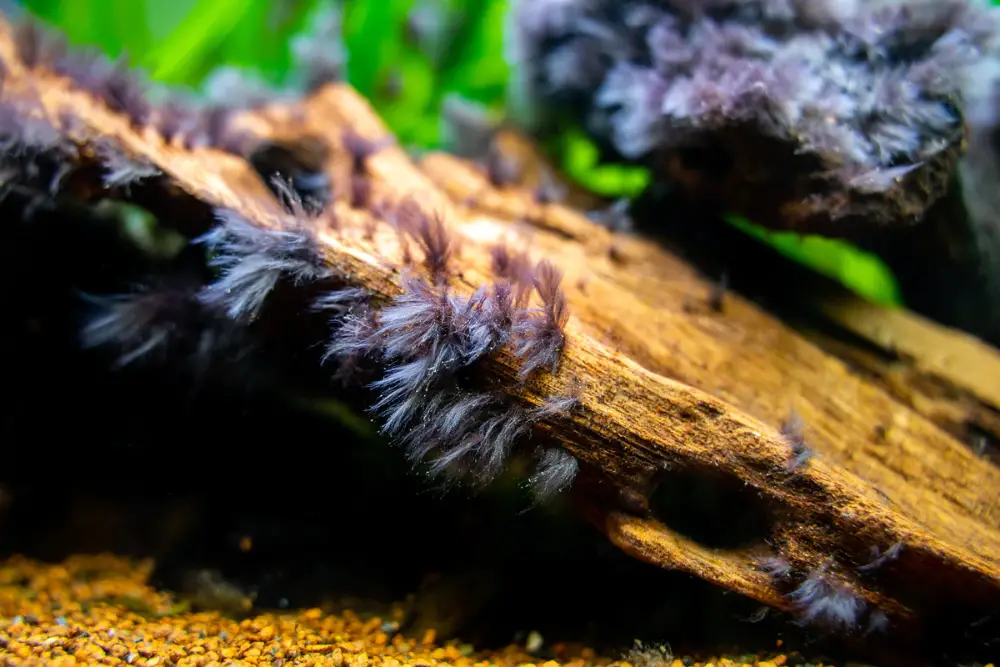
When battling stubborn Black Beard Algae, some aquarists turn to algaecides or chemical treatments as a last resort. These products are specifically formulated to eliminate algae infestations, including Black Beard Algae. However, using them requires caution and careful consideration.
The Role of Algaecides
Algaecides work by targeting and destroying algae cells, providing a more direct approach to algae removal. There are various commercial algaecides available, each formulated with specific active ingredients.
Choosing the Right Algaecide
Before using an algaecide, research the available products and choose one that’s safe for your aquarium inhabitants. Follow the manufacturer’s instructions precisely, as incorrect usage can harm your fish and plants.
Application Process
Typically, algaecides are added directly to the aquarium water. Some products require you to remove activated carbon and turn off UV sterilizers during treatment. It’s crucial to read the instructions carefully to avoid adverse effects.
Precautions and Risks
While algaecides can be effective, they also come with risks. Overdosing or using incompatible treatments can harm your aquatic ecosystem. Additionally, some algaecides may only temporarily suppress algae growth, requiring repeat treatments.
Natural Alternatives First
Before resorting to chemical treatments, explore natural methods and adjustments to your aquarium conditions. If you choose to use algaecides, do so as a last option and with extreme care.
Remember, a healthy and balanced aquarium is less susceptible to Black Beard Algae. While chemical treatments can provide quick results, they should be considered with caution and used sparingly to ensure the well-being of your aquatic environment.
Black Beard Algae Beware, KaveMan Aquatics Is Here
In the battle against the persistent foe known as Black Beard Algae, you now have an arsenal of five effective methods at your disposal. From hydrogen peroxide’s targeted attack to the gentle touch of manual removal, each approach offers a unique solution to this algae challenge.
Remember, the best method for you depends on your aquarium’s specific conditions, the extent of the infestation, and your own preferences. Whether you opt for algae-eating allies, tweak your tank’s environment, or consider chemical treatments, taking action is the first step toward regaining control over your aquatic oasis. That all said, preventing algae growth is always the best practice.
Don’t let Black Beard Algae diminish your aquarium’s beauty and its inhabitants’ health. Select the method that aligns with your goals, implement your plan, and enjoy the rewards of a cleaner and healthier underwater world.
Join the community on our new Discord server to exchange insights and experiences. And if you’re seeking personalized guidance, remember that KaveMan Aquatics is just a message away, ready to provide 1-on-1 coaching for your fish-keeping journey.
-
5 Methods to Remove Black Beard Algae from Your Aquarium — For Good
Discover effective ways to remove black beard algae from your aquarium. Say goodbye to unwanted algae and maintain a thriving tank. Learn more now!



